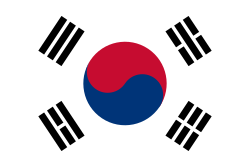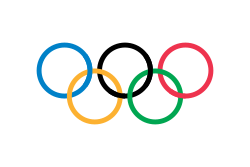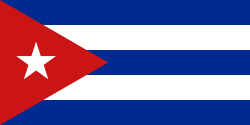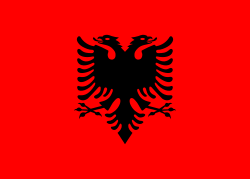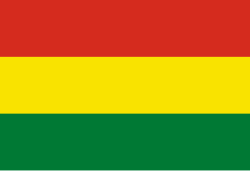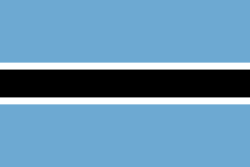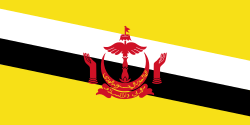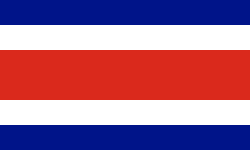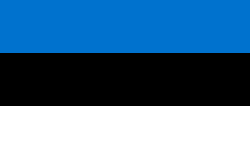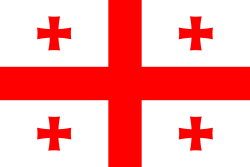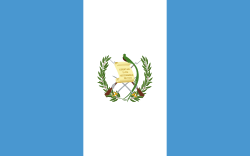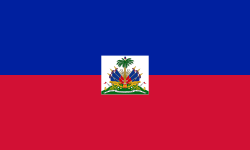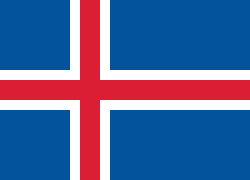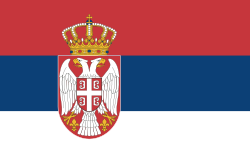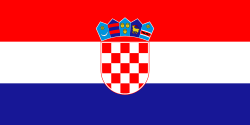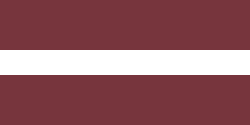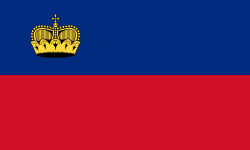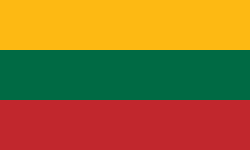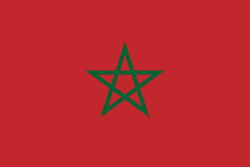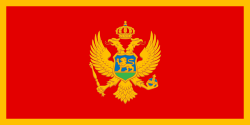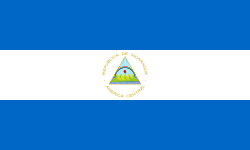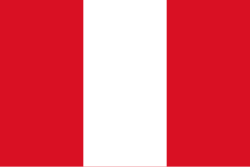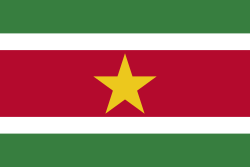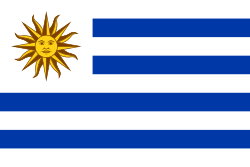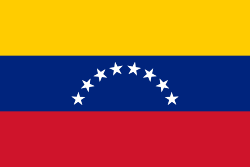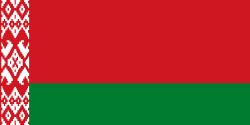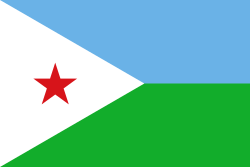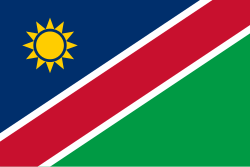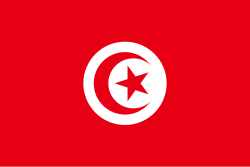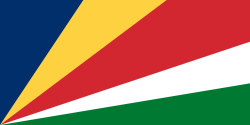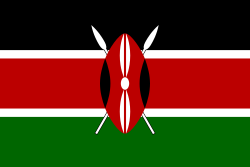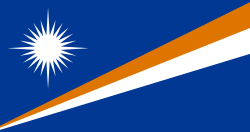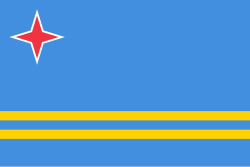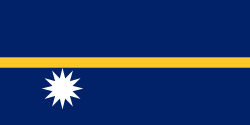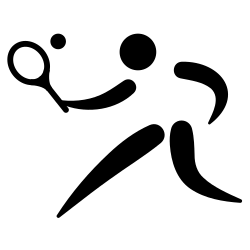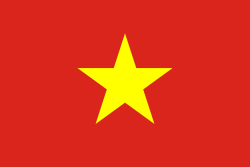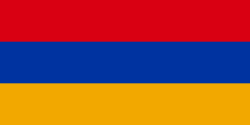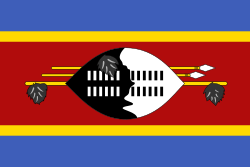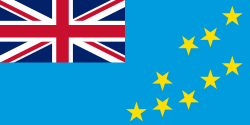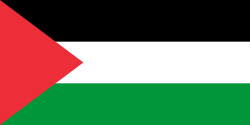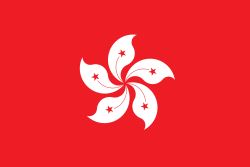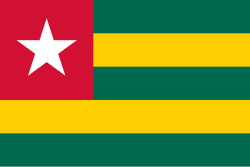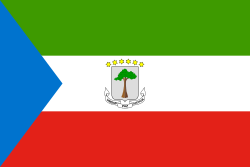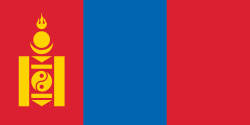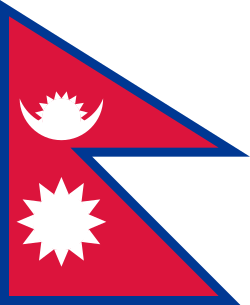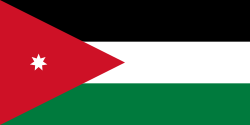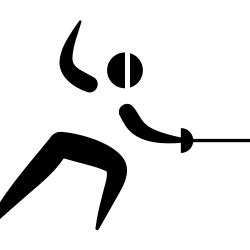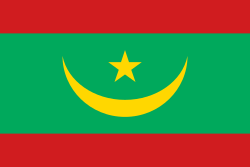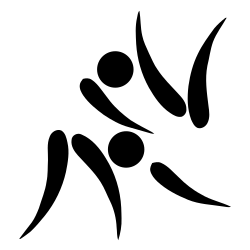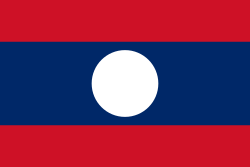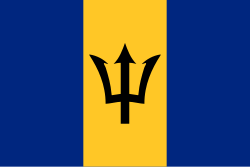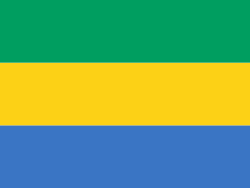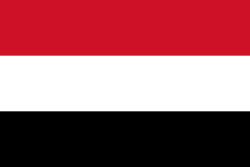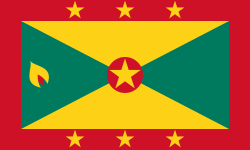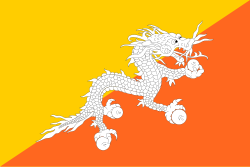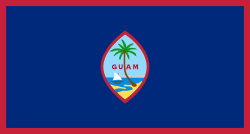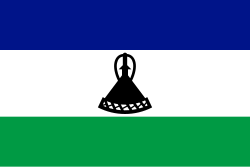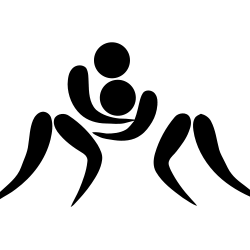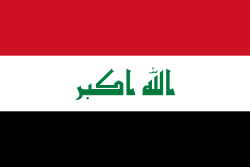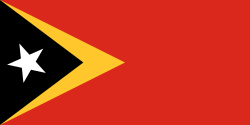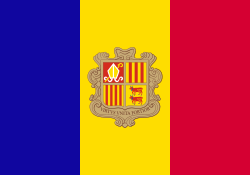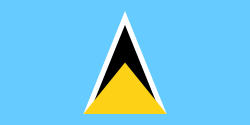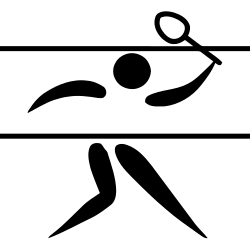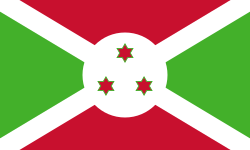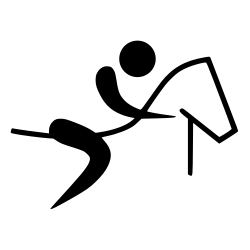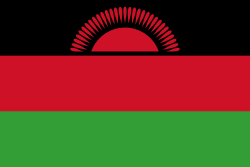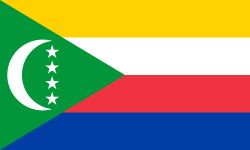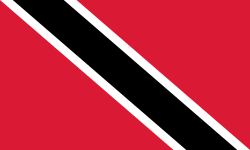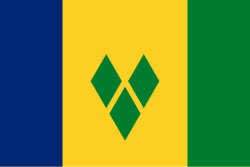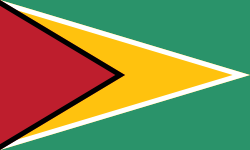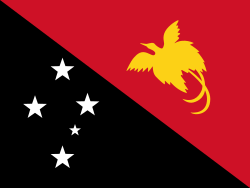Olympiska sommarspelen för ungdomar 2010
| Olympiska sommarspelen för ungdomar 2010 | |
| Grenar | 201 grenar i 26 sporter |
|---|---|
| Deltagare | |
| Nationer | 204 (av 205) |
| Aktiva | 3 600 (uppskattad) |
| Värdskap | |
| Land | |
| Invigning | 14 augusti |
| Spelen öppnades av | Sellapan Ramanathan, president av Singapore |
| Elden tändes av | Darren Choy |
| Avslutning | 26 augusti |
Olympiska spelen för ungdomar 2010 var de första olympiska sommarspelen för ungdomar, ett stort internationellt multisportevenemang som arrangerades i Singapore mellan 14 och 26 augusti 2010. Valet av Singapore gjordes den 21 februari 2008 efter brevröstning av 105 IOK-ledamöter.[1]Totalt 3531 idrottare mellan 14 och 18 år från 204 nationella olympiska kommittéer deltog i 201 grenar i 26 sporter.[2]
Spelens första guldmedalj vanns av den 18-åriga japanska triathlisten Yuka Sato den 15 augusti 2010. Värdnationens första medalj var ett brons i taekwondo av 17-åringen Daryl Tan. Den högsta valören som Singapore vann under spelen var simmaren Rainer Ngs silver, och likaså ett silver i damernas bordtennisturnering av Isabelle Li. För kombinationslagen, som var speciellt för spelen, tilldelades den första medaljen till laget Europa 1, bestående av ryskan Yana Egoryan och italienarna Marco Fichera Marco, Camilla Mancini, Leonardo Affede, Alberta Santuccio Alberta och Eduardo Luperi som vann lagtävlingen i fäktning.
Kandidatur
Elva städer uttryckte intresse av att arrangera spelen, varav nio ansökte. Fem städer valdes ut av IOK: Aten (Grekland), Bangkok (Thailand), Moskva (Ryssland), Singapore och Turin (Italien).
Listan förminskades till två finalister: Singapore och Moskva. Den 21 februari 2008 meddelades att Singapore hade vunnit värdskapet efter ett uttalande från IOK:s president Jacques Rogge.[1]
| Omröstningsresultaten | |||||
|---|---|---|---|---|---|
| Stad | NOK-namn | Brevröster | |||
| Singapore | 53 | ||||
| Moskva | 44 | ||||
Ansökningsdetaljer

Genom sin ansökan till dessa spel gjorde Singapore sin första ansökan om ett sportevenemang i denna storleken. Positiva faktorer i ansökan var landets höga anslutningsmöjligheter med världen, dess ungdomlighet som ett självständigt land, dess positiva rykte om hög kvalitet och harmonin bland invånarna. Staden/landet startade en massiv kampanj, inkluderande hemsida, logotyp (trots IOK:s regler mot anökningslogotyp), en tagline till dess ansökan; Blazing the Trail [3] och de skaffade stort stöd från lokalbefolkningen, däribland fick man studenter att samla in 1 miljon underskrifter för ett spel i Singapore.[4] Det anordnades en tävling för att välja logotyp och tävlingen drog till sig 1 500 deltagare. Vinnaren presenterades den 10 januari 2010. Den logotyp som vann hade namnet Spirit of Youth (ungdomens anda).
Singapore planerade att använda National University of Singapores campus som sin högteknologiska olympiska by. Efter budgetnerdragningar 2008 fick de ändra det till att använda Nanyang Technological Universitys campus i Jurong West som olympisk by.[5] Jurong West Sports and Recreation Centre kommer också att utnyttjas under spelen.
Budgeten omfattade $75,5 miljoner och hade stort statligt stöd
Bostäder
Organisationskommittén hade säkrat 4 310 rum i 36 hotell. Det officiella hotellet var Fairmont Singapore.
Transport och infrastruktur
Alla Singapores tävlingsanläggningar och icke-tävlingsanläggningar fanns inom 30 minuter från den olympiska byn, mediacentret och de olympiska familjehotellen.
En transportgrupp ansvarade för alla transportrelaterade frågor som var specifika för spelen. En pendelservice kopplade alla platser relaterade till spelen, så att de behöriga personerna skulle kunna resa gratis, också via buss och tunnelbana. Det fanns också en Olympic Lane som gav deltagarna snabb transport till de viktigaste anläggningarna.
Förberedelser
Singapore hade fått en del internationellt stöd under förberedelserna för spelet. Kina, arrangör av olympiska sommarspelen 2008, uttryckte önskan om att hjälpa Singapore under deras förberedelser.[6] Sebastian Coe, ordförande i Londons organisationskommitté för de olympiska sommarspelen 2012, informerade om att medlemmar av hans organisationskommitté planerade att delta i evenemanget, inklusive tränare och administratörer.[7]
Organisation
En urvalsprocess för att välja ut medlemmar till organisationskommittén startades strax efter att Singapore hade tilldelats spelen. Det planerades att kommittén skulle besöka IOK för att få mer detaljer om anordnandet av evenemanget.[8] De 23 deltagarna i kommittén avslöjades den 24 mars 2008.
Medalj
En tävling för att utse designen av medaljen till spelen startades av IOK under 2009. Från november till december lämnades nästan 100 förslag in från 34 länder. Röstning pågick online fram till januari 2009.[9]
Facklan
Planen för spelens fackelstafett avslöjades den 26 januari 2010. Lågan tändes i juli och fördes genom fem städer, representerande de fem kontinenterna: Asien, Afrika, Europa, Oceanien och Amerika. Facklan färdades genom följande städer:
Finansiering
Singapore vann omröstningen med en budget på $75,5 miljoner, vilket mestadels drogs in från sponsorer och statligt stöd. Organisationskommittén förutsåg på att få in mellan $40 och $50 miljoner från sponsorer.[10].
Marknadsföring
Organisationskommittén startade en internationell tävling för att utse logotyper till spelen,[11] med målet att innehålla de tre teman som hörde spelen till, Singapores identitet, de olympiska idealen och den ungdomliga andan.[10]
Maskotar
Maskotarna är ett eld-inspirerat lejon vid namn "Lyo" och ett vatten-inspirerat fantasihavslejon vid namn "Merly".[12]
Signaturmelodi
Signaturmelodin, som heter "Everyone", framfördes av fem sångare från de fem kontinenterna. Ken Lim var den exekutive producenten av signaturmelodin.[13]
- Afrika -
 Jody Williams, en Sydafrikansk pop/R&Bsångare.
Jody Williams, en Sydafrikansk pop/R&Bsångare. - Amerika -
 Sean Kingston, en amerikansk rappare och reggaesångare.
Sean Kingston, en amerikansk rappare och reggaesångare. - Asien -
 Tabitha Nauser, trea i den tredje säsongen av Singapore Idol.
Tabitha Nauser, trea i den tredje säsongen av Singapore Idol. - Europa -
 Steve Appleton, en brittisk sångare, låtskrivare och skivproducent.
Steve Appleton, en brittisk sångare, låtskrivare och skivproducent. - Oceanien -
 Jessica Mauboy, tvåa i fjärde säsongen av Australian Idol, en australisk sångare och låtskrivare.
Jessica Mauboy, tvåa i fjärde säsongen av Australian Idol, en australisk sångare och låtskrivare.
Medaljfördelning
Nationerna är fördelade efter, 1 antal guld, 2 antal silver 3, antal brons. Medaljer vunna av Kombinationslag är inräknade under just Kombinationslaget, och inte under gällande nationer.
- Medaljfördelning, topp 10
| Pl. | Nation | Guld | Silver | Brons | Totalt |
|---|---|---|---|---|---|
| 1 | 30 | 16 | 5 | 51 | |
| 2 | 18 | 14 | 11 | 43 | |
| 3 | 11 | 4 | 4 | 19 | |
| 4 | 9 | 9 | 15 | 33 | |
| — | 9 | 8 | 11 | 28 | |
| 5 | 9 | 3 | 2 | 14 | |
| 6 | 8 | 13 | 8 | 29 | |
| 7 | 8 | 5 | 3 | 16 | |
| 8 | 6 | 4 | 5 | 15 | |
| 9 | 6 | 2 | 7 | 15 | |
| 10 | 5 | 9 | 5 | 19 | |
| 62 | 0 | 2 | 4 | 6 |
Arrangör (Singapore)
Sporter
Spelen omfattade 26 sporter, med totalt 31 discipliner, enligt IOK:s modell.
|
|
|
Kalender
Varje blå box representerar en tävling, exempelvis ett kval, den dagen. De gula boxarna representerar en prisutdelning för en sport. Siffran i boxen visar antalet finaler som hölls den dagen.[14]
För ett komplett och detaljerat tävlingsprogram se respektive sports artikel
| ● | Öppningsceremoni | ● | Tävling | ● | Grenfinal | ● | Avslutningsceremoni |
| Augusti | 14 | 15 | 16 | 17 | 18 | 19 | 20 | 21 | 22 | 23 | 24 | 25 | 26 | Antal Grenar |
|---|---|---|---|---|---|---|---|---|---|---|---|---|---|---|
| Ceremonier | ● | ● | ||||||||||||
| Simhopp | 2 | 2 | 4 | |||||||||||
| Simning | 2 | 4 | 4 | 4 | 4 | 18 | ||||||||
| Bågskytte | 1 | 1 | 1 | 3 | ||||||||||
| Friidrott | 2 | 4 | 4 | 4 | 4 | 4 | 22 | |||||||
| Badminton | 2 | 2 | ||||||||||||
| Basket | 2 | 2 | ||||||||||||
| Boxning | 4 | 4 | 8 | |||||||||||
| Kanotsport | 1 | 1 | 2 | |||||||||||
| Cykelsport (BMX) | 1 | 1 | 2 | |||||||||||
| Cykelsport (Mountain Bike) | 1 | 1 | 2 | |||||||||||
| Ridsport (Hoppning) | 1 | 2 | 3 | |||||||||||
| Fäktning | 2 | 2 | 2 | 6 | ||||||||||
| Landhockey | 2 | 2 | ||||||||||||
| Fotboll | 1 | 1 | 2 | |||||||||||
| Gymnastik (Artistisk) | 2 | 5 | 5 | 12 | ||||||||||
| Gymnastik (Rytmisk) | 1 | 1 | 2 | |||||||||||
| Gymnastik (Trampolin) | 2 | 2 | ||||||||||||
| Handboll | 2 | 2 | ||||||||||||
| Judo | 4 | 4 | 8 | |||||||||||
| Modern femkamp | 2 | 1 | 3 | |||||||||||
| Rodd | 4 | 4 | ||||||||||||
| Segling | 4 | 4 | ||||||||||||
| Skytte | 2 | 2 | 4 | |||||||||||
| Bordtennis | 2 | 2 | ||||||||||||
| Taekwondo | 5 | 5 | 5 | 5 | 20 | |||||||||
| Tennis | 2 | 2 | 4 | |||||||||||
| Triathlon | 2 | 2 | ||||||||||||
| Volleyboll (Inomhus) | 1 | 1 | 2 | |||||||||||
| Tyngdlyftning | 2 | 3 | 3 | 3 | 11 | |||||||||
| Brottning (Strand) | 2 | 2 | 4 | |||||||||||
| Brottning (Inomhus) | 7 | 7 | 14 | |||||||||||
| Antal Grenar | 4 | 6 | 8 | 20 | 20 | 12 | 25 | 22 | 13 | 24 | 22 | 8 | 184 |
Deltagande nationer
204 av IOK:s medlemsländer deltog i spelen. Det enda landet som inte deltog var Kuwait som uteslöts ur spelen i januari 2010. Idrottare från Kuwait deltog under olympisk flagg.
|
|
|
|
Anläggningar
Totalt arton tävlingsanläggningar hade förberetts för spelen, spridda över fem områden i staden. Elva av dem behövde inga permanenta arbeten, tre behövde det, en, Singapore Turf Club Riding School, byggdes som en permanent anläggning för ridskolan, och fyra var helt tillfälligt placerade på befintliga öppna ytor eller vattendrag. Alla anläggningar, utom Singapore Turf Club Riding School och Suntec Singapore International Convention and Exhibition Centre, ägs av staten.
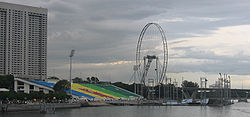
Sju anläggningar öronmärktes för träning, särskilt dåvarande idrottsanläggningar inom National University of Singapore (NUS) som låg intill den olympiska byn.[15] Byggande av universitetet i staden började den 31 januari 2008[16], och påskyndades då Singapore utsetts till värdar.[17] Andra huvudanläggningar var The Float at Marina Bay, vilken användes till ceremonierna, Marina Bay Sands, mediacentret, och The Ritz-Carlton Millenia Singapore, som fungerade som familjehotell med 500 rum säkrade av organisationen.
Den 2 augusti 2008 meddelades det att den olympiska byn skulle ligga i Nanyang Technological Universitys campus istället för i National University of Singapore University Town.[18]
| Anläggning | Sporter |
|---|---|
| Bishan Sports Hall | Gymnastik |
| Bishan Stadium | Friidrott |
| East Coast Park | Triathlon |
| Suntec Singapore International Convention and Exhibition Centre | Boxning, Brottning, Fäktning, Handboll, Judo, Taekwondo |
| Jalan Besar Stadium | Fotboll |
| Kallang Field | Bågskytte |
| Kallang Tennis Centre | Tennis |
| Marina Reservoir | Kanotsport, Rodd |
| National Sailing Centre | Segling |
| Youth Space | 3 mot 3 basket |
| Sengkang Hockey Stadium | Landockey |
| Singapore Indoor Stadium | Badminton, Bordtennis |
| Singapore Sports School | Simning, Modern femkamp, Skytte |
| Singapore Turf Club | Ridsport |
| Tampines Bike Park | BMX och Mountain Bike (Cykelsport) |
| The Float at Marina Bay | Cykling och ceremonier |
| Toa Payoh Sports Hall | Tyngdlyftning, Volleyboll |
| Toa Payoh Swimming Complex | Simhopp |
| Träningsanläggningar | Sporter* |
|---|---|
| Catholic High School | Gymnastik |
| Choa Chu Kang Stadium | Fotboll |
| Jurong East Sports Hall | Volleyboll |
| Jurong East Stadium | Fotboll |
| Jurong West Sports Hall | Handboll |
| Jurong West Stadium | Fotboll |
| Jurong West Swimming Complex | Simning |
| National University of Singapore | Bordtennis, Taekwondo, Brottning |
| Raffles Institution | Gymnastik |
| Raffles Institution (Junior College) | Gymnastik |
| Singapore Polytechnic | Badminton and Fotboll |
| Youth Olympic Village (NTU, NIE) | Tennis, Fäktning, Basket, Landockey, Handboll, Triathlon, Judo, Taekwondo, Fotboll, Boxning, Simning, Tyngdlyftning, Friidrott |
*Träning för övriga sporter hölls i tävlingsanläggningar.
Kultur och utbildningsprogram
IOK har satte upp en vision om att spelen skulle balansera sport, kultur och utbildning. Målet med kultur och utbildningsprogrammet var att utbilda, engagera och påverka idrottarna att utveckla sann sportsmannaanda och leva i olympiska spelens anda, respekt, vänskap och att ha roligt på samma gång.
För att uppmuntra utbildning bland de deltagande ungdomarna, planerade man att arrangera liveframträdanden från de deltagande ungdomarna. Man arrangerade olika workshops baserade på åtta olika teman:
- Historia om den olympiska rörelsen
- Olympism och olympiska värderingar
- Sporters sammanhang till exempel hantering av en professionell olympisk karriär
- Risker inom sport till exempel dopning och vadslagningsproblem
- Välmående och hälsa
- Att engagera ungdomar (Karriär i sport till exempel Sport-relaterade karriärmöjligheter)
- Socialt ansvar
- Digitala medier
Medier
Organisationen planerade att ha stor användning av medier online för att marknadsföra sina evenemang.[källa behövs] Bland dem fanns Friendster, Facebook, och den officiella Youth.sg 2010s diskussionsforum.[källa behövs] Tanken är att nå ut till ungdomar i hela världen, så att gemenskapen mellan de idrottande ungdomarna sprids redan innan spelen.[källa behövs]
Singapores utbildningscentrum
Singapores utbildningscentrum var förlagt till organisationskommitténs högkvarter vid Kay Siang Road. Det öppnades officiellt av Singapores nationella olympiska styrelses president Teo Chee Hean och före detta stavhopparen Sergej Bubka.
Tvåvåningshuset på 600 m² kommer var öppet för allmänheten, och kommer att lät besökarna utforska den olympiska andan och Singapores väg till arrangörskapet. Även fakta om andra spel och resultat från tidigare olympiska spel fanns tillgängligt. Det fanns också möjlighet att prova sporter som bordtennis, fäktning, och basket.
Påverkan
Ekonomi
Evenemanget bidrog stort till Singapores ekonomiska tillväxt då det drog till sig omfattande turism och inkomster från både åskådare och idrottare.[källa behövs]
Socialt
Genom kultur- och utbildningsprogrammets sammanfogande med spelen, förväntade sig Singapore många nya relationer med andra nationer genom vetenskap.[källa behövs] Idrottare och besökare från andra länder kunde också lära sig mycket genom relationer med andra länder.[källa behövs] Kunskap om likheter med kulturen i Singapore ökades genom stort utbyte av kunskap.[källa behövs]
Referenser
- ^ [a b] ”Singapore to host the 1st Summer Youth Olympic Games in 2010”. IOC. 21 februari 2008. Arkiverad från originalet den 1 augusti 2008. https://web.archive.org/web/20080801102240/http://www.olympic.org/uk/news/olympic_news/full_story_uk.asp?id=2491. Läst 21 februari 2008.
- ^ ”Youth Olympic Games facts & figures”. SYOGOC. 20 maj 2010. Arkiverad från originalet den 20 augusti 2010. https://www.webcitation.org/5s822oIjP?url=http://www.singapore2010.sg/public/sg2010/en/en_about_us/en_youth_olympics_games.html. Läst 14 augusti 2010. Tan Yo-Hinn (31 juli 2010). ”Swim sensation Phelps and lightning Bolt will miss Youth Olympics”. Today. Arkiverad från originalet den 26 augusti 2010. https://www.webcitation.org/5sH350Ft9?url=http://www.todayonline.com/Sports/EDC100731-0000092/Swim-sensation-Phelps-and-lightning-Bolt-will-miss-Youth-Olympics.
- ^ Patwant Singh (16 oktober 2007). ”Singapore's Youth Olympic Games Committee launches logo, website”. Channel NewsAsia. Arkiverad från originalet den 17 oktober 2007. https://archive.is/20071017083904/http://www.channelnewsasia.com/stories/singaporelocalnews/view/305988/1/.html. Läst 16 oktober 2007.
- ^ ”Youth Olympic athletes to stay at NTU campus”. AsiaOne. Arkiverad från originalet den 1 juni 2012. https://web.archive.org/web/20120601080452/http://news.asiaone.com/News/Education/Story/A1Story20080803-80282.html. Läst 12 augusti 2008.
- ^ Margaret Perry (28 oktober 2007). ”Jurong West to host Youth Olympic events if S'pore wins bid”. Channel NewsAsia. Arkiverad från originalet den 25 augusti 2010. https://web.archive.org/web/20100825061035/http://www.channelnewsasia.com/stories/specialreport/news/308278_61/1/.html. Läst 28 oktober 2007.
- ^ Hasnita Majid (28 februari 2008). ”Minister Yeo says S'pore-China relations more multi-faceted”. Channel NewsAsia. Arkiverad från originalet den 19 november 2011. https://web.archive.org/web/20111119063531/http://www.channelnewsasia.com/stories/specialreport/news/331768_61/1/.html. Läst 28 februari 2008.
- ^ Valerie Tan (28 februari 2008). ”London Olympics team expected to be in S'pore for Youth Olympic Games”. Channel NewsAsia. Arkiverad från originalet den 5 mars 2008. https://archive.is/20080305004214/http://www.channelnewsasia.com/stories/specialreport/news/331751_61/1/.html. Läst 28 februari 2008.
- ^ Wong Mun Wai (11 mars 2008). ”Arkiverade kopian”. Channel NewsAsia. Arkiverad från originalet den 12 mars 2008. https://web.archive.org/web/20080312115205/http://www.channelnewsasia.com/stories/singaporelocalnews/view/334233/1/.html. Läst 11 mars 2008.
- ^ [singapore2010.sg/public/sg2010/en/en_newsletter/en_happenings/en_20100107_19_hp02_vote_for_the_first_yog_design.html/ Vote For The First YOG Medal Design]
- ^ [a b] ”Channelnewsasia.com”. Arkiverad från originalet den 19 november 2011. https://web.archive.org/web/20111119042114/http://www.channelnewsasia.com/stories/singaporelocalnews/view/363595/1/.html. Läst 26 maj 2010.
- ^ ”Singapore 2010 Logo Design Competition - Home”. Arkiverad från originalet den 12 augusti 2010. https://web.archive.org/web/20100812042744/http://www.singapore2010.sg/logo/.
- ^ The first Youth Olympic Games mascots unveiled for Singapore 2010!
- ^ ”YOG theme song to be sung by stars from around the world”. Arkiverad från originalet den 28 mars 2010. https://web.archive.org/web/20100328150837/http://www.channelnewsasia.com/stories/singaporelocalnews/view/1045851/1/.html. Läst 26 maj 2010.
- ^ ”Olympic Games Competition Schedule”. BOCOG. 9 november 2006. Arkiverad från originalet den 18 juni 2007. https://web.archive.org/web/20070618095401/http://en.beijing2008.cn/cptvenues/schedule/. Läst 5 februari 2007.
- ^ Nus Utown
- ^ ”Channelnewsasia.com - Special Reports”. Arkiverad från originalet den 26 juli 2009. https://web.archive.org/web/20090726150021/http://www.channelnewsasia.com/stories/specialreport/news/326079_61/1/.html. Läst 26 maj 2010.
- ^ ”Channelnewsasia.com”. Arkiverad från originalet den 18 december 2011. https://web.archive.org/web/20111218101423/http://www.channelnewsasia.com/stories/singaporelocalnews/view/330488/1/.html. Läst 26 maj 2010.
- ^ Wong Siew Ying (2 augusti 2008). ”Youth Olympic Village to be located at NTU, not NUS”. Channel NewsAsia. Arkiverad från originalet den 25 maj 2012. https://archive.is/20120525024053/http://www.channelnewsasia.com/stories/singaporelocalnews/view/364499/1/.html. Läst 2 augusti 2008.
- ^ ”Singapore Candidature File Volume 1”. BOCOG. Arkiverad från originalet den 9 april 2008. https://web.archive.org/web/20080409022031/http://www.singapore2010.sg/pdf/Can_File_Vol1.pdf. Läst 2 mars 2008.
Externa länkar
| ||||||||
Media som används på denna webbplats
Flag of Senegal
Färg som används: National flag | South African Government and Pantone Color Picker
| grön | rendered as RGB 0 119 73 | Pantone 3415 C |
| gul | rendered as RGB 255 184 28 | Pantone 1235 C |
| röd | rendered as RGB 224 60 49 | Pantone 179 C |
| blå | rendered as RGB 0 20 137 | Pantone Reflex Blue C |
| vit | rendered as RGB 255 255 255 | |
| svart | rendered as RGB 0 0 0 |
Flag of South Korea from October 1997 to May 2011. In May 2011, the exact colors were specified into their current shades.
Olympic Movement flag
Proportions 2:3, created 1913, adopted 1914, first used 1920.
- Colors as per http://fairspielen.de/wp-content/uploads/2015/09/Annexe-3-Olympism_and_the_Olympic_Symbol_-_Principles_and_Usages_Guide-1.pdf
- blue: PMS 3005C
- yellow: PMS 137C
- black: PMS 426C
- green: PMS 355C
- red: PMS 192C
- Dimensions of the rings taken from http://fairspielen.de/wp-content/uploads/2015/09/Annexe-3-Olympism_and_the_Olympic_Symbol_-_Principles_and_Usages_Guide-1.pdf
The civil ensign and flag of Belgium. It is identical to Image:Flag of Belgium.svg except that it has a 2:3 ratio, instead of 13:15.
| Bolivias flagga* | |
|---|---|
| country | Template:I18n/Republic of Bolivia |
| används av | Bolivia |
| från | 1851 |
| till | Present |
| skapad av | Government of Bolivia |
| format | 15:22 |
| form | rektangulär |
| färger | röd, gul, grön
flag has 3 horizontal stripes |
| andra egenskaper | A horizontal tricolor of red, yellow and green. |
Det är enkelt att lägga till en ram runt den här bilden
Den Dominikanska republikens flagga består av ett vitt centrerat kors som sträcker sig hela vägen ut till flaggans kant. I mitten på korset sitter ett emblem med en bibel, ett gyllene kors och sex dominikanska flaggor. Emblemet är omgivet av olivkvistar och palmblad. Under emblemet står ”Republica Dominicana” och ovanför ett band med landets mottot ”Dios, Patria, Libertad” (”Gud, Landet, Frihet”).
bendera Indonesia
Flag of Iran. The tricolor flag was introduced in 1906, but after the Islamic Revolution of 1979 the Arabic words 'Allahu akbar' ('God is great'), written in the Kufic script of the Qur'an and repeated 22 times, were added to the red and green strips where they border the white central strip and in the middle is the emblem of Iran (which is a stylized Persian alphabet of the Arabic word Allah ("God")).
The official ISIRI standard (translation at FotW) gives two slightly different methods of construction for the flag: a compass-and-straightedge construction used for File:Flag of Iran (official).svg, and a "simplified" construction sheet with rational numbers used for this file.
Flag of Israel. Shows a Magen David (“Shield of David”) between two stripes. The Shield of David is a traditional Jewish symbol. The stripes symbolize a Jewish prayer shawl (tallit).
Flag of Jamaica. “The sunshine, the land is green, and the people are strong and bold” is the symbolism of the colours of the flag. GOLD represents the natural wealth and beauty of sunlight; GREEN represents hope and agricultural resources; BLACK represents the strength and creativity of the people. The original symbolism, however, was "Hardships there are, but the land is green, and the sun shineth", where BLACK represented the hardships being faced.
Kanadas flagga, införd 1965; denna version med Pantone‐nyanser. Nuvarande utformning ersatte den tidigare kanadensiska Red Ensign.
Chinese Taipei Olympic Flag. According to the official website of Chinese Taipei Olympic Committee, Blue Sky(circle) & White Sun(triangles) above the Olympic rings is neither the National Emblem of the Republic of China, nor the Party Emblem of Kuomintang (KMT), but a design in between, where the triangles do not extend to the edge of the blue circle, as registered at International Olympic Committee in 1981 and digitally rendered in 2013. Besides, the blue outline of the five-petaled plum blossom is broader than the red one. Moreover, the CMYK code of the blue one and the Blue Sky & White Sun is "C100-M100-Y0-K0", and different from the Olympic rings (C100-M25-Y0-K0). Note that it's the only version recognized by IOC.
Det är enkelt att lägga till en ram runt den här bilden
Flag of Liechtenstein
Författare/Upphovsman: Gutten på Hemsen, Licens: CC0
Flag of Norway with colors from the previous version on Commons. This file is used to discuss the colors of the Norwegian flag.
Flag of Portugal, created by Columbano Bordalo Pinheiro (1857–1929), officially adopted by Portuguese government in June 30th 1911 (in use since about November 1910). Color shades matching the RGB values officially reccomended here. (PMS values should be used for direct ink or textile; CMYK for 4-color offset printing on paper; this is an image for screen display, RGB should be used.)
The flag of Slovenia.
- "The construction sheet for the coat of arms and flag of the Republic of Slovenia
- is issued in the Official Gazette Uradni list Republike Slovenije #67, 27 October 1994
- as the addendum to the Law on the coat of arms and flag."
Pictograms of Olympic sports - Volleyball (indoor). This is unofficial sample picture. Images of official Olympic pictograms for 1948 Summer Olympics and all Summer Olympics since 1964 can be found in corresponding Official Reports.
Flag of Namibia
Pictograms of Olympic sports - Taekwondo. This is unofficial sample picture. Images of official Olympic pictograms for 1948 Summer Olympics and all Summer Olympics since 1964 can be found in corresponding Official Reports.
Pictograms of Olympic sports - Basketball. This is unofficial sample picture. Images of official Olympic pictograms for 1948 Summer Olympics and all Summer Olympics since 1964 can be found in corresponding Official Reports.
The flag of Aruba
Burkina Fasos flagga
Pictograms of Olympic sports - Gymnastics (artistic). This is unofficial sample picture. Images of official Olympic pictograms for 1948 Summer Olympics and all Summer Olympics since 1964 can be found in corresponding Official Reports.
Pictograms of Olympic sports – . This is an unofficial sample picture. Images of official Olympic pictograms for 1948 Summer Olympics and all Summer Olympics since 1964 can be found in corresponding Official Reports.
Naurus flagga
Pictograms of Olympic sports - Tennis. This is unofficial sample picture. Images of official Olympic pictograms for 1948 Summer Olympics and all Summer Olympics since 1964 can be found in corresponding Official Reports.
Pictograms of Olympic sports - Boxing. This is unofficial sample picture. Images of official Olympic pictograms for 1948 Summer Olympics and all Summer Olympics since 1964 can be found in corresponding Official Reports.
Författare/Upphovsman: See File history below for details., Licens: CC0
Flag of Oman
Pictograms of Olympic sports - Cycling (road). This is unofficial sample picture. Images of official Olympic pictograms for 1948 Summer Olympics and all Summer Olympics since 1964 can be found in corresponding Official Reports.
Pictograms of Olympic sports - Sailing. This is unofficial sample picture. Images of official Olympic pictograms for 1948 Summer Olympics and all Summer Olympics since 1964 can be found in corresponding Official Reports.
Flag of Togo. Aspect ratio modified for projects that require an aspect ratio of 3:2.
Författare/Upphovsman: See File history below for details., Licens: CC0
Dominicas flagga
Pictograms of Olympic sports - Shooting. This is unofficial sample picture. Images of official Olympic pictograms for 1948 Summer Olympics and all Summer Olympics since 1964 can be found in corresponding Official Reports.
Pictograms of Olympic sports - Modern pentathlon. This is unofficial sample picture. Images of official Olympic pictograms for 1948 Summer Olympics and all Summer Olympics since 1964 can be found in corresponding Official Reports.
Pictograms of Olympic sports - Field hockey. This is unofficial sample picture. Images of official Olympic pictograms for 1948 Summer Olympics and all Summer Olympics since 1964 can be found in corresponding Official Reports.
Pictograms of Olympic sports - Football. This is unofficial sample picture. Images of official Olympic pictograms for 1948 Summer Olympics and all Summer Olympics since 1964 can be found in corresponding Official Reports.
Flag of the Ivory Coast, written by Jon Harald Søby, modified by Zscout370. The colors match to what is reported at http://fotw.vexillum.com/flags/ci.html.
Pictograms of Olympic sports - Swimming. This is unofficial sample picture. Images of official Olympic pictograms for 1948 Summer Olympics and all Summer Olympics since 1964 can be found in corresponding Official Reports.
Pictograms of Olympic sports - Fencing. This is unofficial sample picture. Images of official Olympic pictograms for 1948 Summer Olympics and all Summer Olympics since 1964 can be found in corresponding Official Reports.
Flag of Mauritania, adopted in 2017. The National Assembly added red stripes to the top and bottom edges to represent “the blood shed by the martyrs of independence”.
Chinese Taipei Olympic Flag. According to the official website of Chinese Taipei Olympic Committee, Blue Sky(circle) & White Sun(triangles) above the Olympic rings is neither the National Emblem of the Republic of China, nor the Party Emblem of Kuomintang (KMT), but a design in between, where the triangles do not extend to the edge of the blue circle, as registered at International Olympic Committee in 1981 and digitally rendered in 2013. Besides, the blue outline of the five-petaled plum blossom is broader than the red one. Moreover, the CMYK code of the blue one and the Blue Sky & White Sun is "C100-M100-Y0-K0", and different from the Olympic rings (C100-M25-Y0-K0). Note that it's the only version recognized by IOC.
Pictograms of Olympic sports - Judo. This is unofficial sample picture. Images of official Olympic pictograms for the 1948 Summer Olympics and all Summer Olympics since 1964 can be found in corresponding Official Reports.
Flag of Laos
The flag of Guam, courtesy an e-mail from the author of xrmap. Modifications by Denelson83.
Pictograms of Olympic sports - Archery. This is unofficial sample picture. Images of official Olympic pictograms for 1948 Summer Olympics and all Summer Olympics since 1964 can be found in corresponding Official Reports.
The national flag of Kingdom of Thailand; there are total of 3 colours:
- Red represents the blood spilt to protect Thailand’s independence and often more simply described as representing the nation.
- White represents the religion of Buddhism, the predominant religion of the nation
- Blue represents the monarchy of the nation, which is recognised as the centre of Thai hearts.
Pictogramme officiel triathlon olympique
Författare/Upphovsman: Sengkang, Licens: CC BY-SA 3.0
Marina Bay Floating Platform
Pictograms of Olympic sports - Handball. This is unofficial sample picture. Images of official Olympic pictograms for 1948 Summer Olympics and all Summer Olympics since 1964 can be found in corresponding Official Reports.
Pictograms of Olympic sports - Wrestling. This is unofficial sample picture. Images of official Olympic pictograms for 1948 Summer Olympics and all Summer Olympics since 1964 can be found in corresponding Official Reports.
Pictograms of Olympic sports - Canoeing (flatwater). This is unofficial sample picture. Images of official Olympic pictograms for 1948 Summer Olympics and all Summer Olympics since 1964 can be found in corresponding Official Reports.
Författare/Upphovsman: JeCCo, Licens: CC BY-SA 3.0
View of the Singapore Skyline.
Flag of São Tomé and Príncipe
Pictograms of Olympic sports - Badminton. This is unofficial sample picture. Images of official Olympic pictograms for 1948 Summer Olympics and all Summer Olympics since 1964 can be found in corresponding Official Reports.
Pictograms of Olympic sports - Weightlifting. This is unofficial sample picture. Images of official Olympic pictograms for 1948 Summer Olympics and all Summer Olympics since 1964 can be found in corresponding Official Reports.
Det är enkelt att lägga till en ram runt den här bilden
Flag of South Korea from October 1997 to May 2011. In May 2011, the exact colors were specified into their current shades.
Pictograms of Olympic sports - Diving. This is unofficial sample picture. Images of official Olympic pictograms for 1948 Summer Olympics and all Summer Olympics since 1964 can be found in corresponding Official Reports.
Pictograma de los juegos ecuestres.
Flag of Rwanda. The flag ratio is 2:3 with the stripes being 2:1:1. Colors are the following officially: Pantone 299 C 2X (blue), RAL 6029 (green), RAL 1023 (yellow) and RAL 1003 (golden yellow). (As of 03/08/2010, the only color used is the Pantone 299 C, which is from here. The rest of the colors are RAL shades from here.)
Pictograms of Olympic sports - Rowing. This is unofficial sample picture. Images of official Olympic pictograms for 1948 Summer Olympics and all Summer Olympics since 1964 can be found in corresponding Official Reports.
Trinidad och Tobagos flagga
Pictograms of Olympic sports - Tennis. This is unofficial sample picture. Images of official Olympic pictograms for 1948 Summer Olympics and all Summer Olympics since 1964 can be found in corresponding Official Reports.












